After a very long journey the day before, it was good to wake up and not be in any particular hurry. And it was rather nice just to sit and absorb the atmosphere at the very lovely Riad Lamane. We enjoyed a simple but pleasant breakfast in the gardens. The owners of the riad had performed a remarkable job with presentation. The bungalows were virtually embedded in exotic tropical gardens and despite accommodating a large number of tourists, there was a real feeling of both space and privacy. And being located beside the quiet hamlet of Amezrou gave a perception of tranquil rural village living.
Our itinerary for the day was to spend the morning in Zagora township and its surrounds before heading off for the 164 kilometer drive to Ouarzazate in central-southern Morocco. Quite frankly, and I know it sounds like we are real heathens, we would have been just as happy to stay at the Riad Lamane for the day.
Zagora is a major commercial centre located in the Draa Valley of south Morocco and is home to around 35,000 inhabitants. An old trading post and gateway to the Sahara, Zagora was the site of the Saadian expedition in 1591 to conquer the famous and wonderfully named town of Timbuktu in Mali. Sadly, an old well known sign "Timbuktu 52 Days" (presumably by foot or camel) had been removed from the main street of Zagora.
Our first visit was to the village of Tamegroute which has a history as an important centre of learning and religion through its famous Sufi Zawiya or religious schools. A visit to Tamegroute's Zawiya Nassiriyya is said to cure anxiety and high blood pressure, thanks to the post-mortem calming influence of Sidi Mohamed ben Nassir, founder of the influential Nassiri brotherhood in the 17th century. I can assure you this is not true.
Mohamed left us at the Zawiya saying he would pick us up in an hour's time. After several cups of coffee at breakfast, we were both dying to find a toilet and our good Mohamed assured us we would have no trouble in finding one in the Zawiya complex. Having a new false bladder made things a lot more serious for Alan. And not surprisingly, the situation was hopeless. We couldn't find anyone who spoke English and there was absolutely no signage. After a long walk we did eventually find a toilet but it sure didn't do much for our mood.
Despite its reputation, the Zawiya Nassiriyya visit didn't help our poor humour one bit. We were met by an elderly fragile looking man in a wheelchair who escorted us on a "tour" of the Zawiya library which is said to house 4,000 precious intellectual, historical and religious manuscripts. One by one, the elderly man made us inspect many of these ancient documents. I am sure the collection would be of great interest to those expert in Islamic history - but not even being able to read the script - it made little sense to us. We tried hard to appear interested but after an hour of this charade it was all just too much. Sensing our impatience, the old man began talking to us about funding for the library, then really heavied us about an expected donation. Despite paying for our entry, we ended up paying the additional sum he asked for and left.
Our next visit was to the old city or Ksour of Tamegroute. Ksours are ancient fortified villages built to ensure maximum security for their inhabitants and are a typical habitat of the Draa Valley. A kasbah on the other hand, is distinguished from a ksour by its smaller size.
Our guide for our tour of the ksour was a pleasant, friendly young man wearing a brilliant sky blue turban and scarf, and a long flowing gown. Like many of the locals of the Draa Valley, he was quite dark skinned and was a lot more African in appearance than those we had met from the other parts of our Moroccan travels.
The Tamegroute Ksour, he explained was still a living city. It was recently government funded along the lines of a co-operative to assist the villagers in establishing businesses to earn income particularly from tourism, and in doing so, preserve their ksour culture and way of life.
The small lanes and adobe houses of the ksour were fascinating but it was a very basic way of life for the village people. As part of our tour we were invited into a ksour home. A young mother of four welcomed us, offering us tea while our guide spoke about their village life. Her home was just one very basic room which incorporated beds and a small cooking area.
A guide is not a guide of course if he or she doesn't show you eventually to a business or shop where you can purchase some local wares. Tamegroute Co-operative Pottery is renown for its green ceramics. It still practises an ancient glaze technique including silicon, manganese and copper which when baked in the kiln results in a striking colour of deep green. The pottery is run by small number of families who share the kilns and the pottery workshops, and operate a small but successful shop outlet.
It's amazing when you are travelling how good the wares in the tourist shops look. Perhaps it's the light and display techniques. Anyway, I rather liked a lot of the ceramic ware, although Alan for a change was sceptical. The pottery was quite substantial and of course the last thing we needed was a heavy ceramic pot or dish to cart back in our luggage. Like all tourist businessmen, the shop owner was very persuasive - and he most probably had heard well in advance about Alan and Wendy The Compulsive Shoppers. I found it difficult to say no to buying at least something when it was produced by a co-operative that was established for such a worthy cause. Alan disagreed. Finally I gave in, buying a large, heavy yellow curved plate with attractive patterning. Needless to say, Alan was not at all impressed as he tried to shove it into his back pack. What is worse, it looked simply awful when we got it home!
Mohamed returned us to the Riad Lamane. To my delight he had kindly organised a camel ride for me. He and Alan would wait at the riad while I took off with my camel. I was over the moon. Alan was decidedly unimpressed.
Hamadu was a lovely soft beige (I guess you could say camel coloured) camel with a sweet face and a nature to match. His owner was a former army man who spoke excellent English and was obviously very fond of his camel. It was reassurance for me that a lot of so called bad animal behaviour (that camels are notorious for) is probably because of mistreatment or bad handling. The owner accompanied Hamadu and me on our hour's wander around Amezrou, chatting about village life and about his camel. It wasn't quite my scene of Omar Shariff and Lawrence of Arabia - but it was easy company.
It was also a great way to see Amezrou village. Being on top of the tall Hamadu enabled me to see over the stone fences of the traditional houses and their tiny farming plots, and then across to extensive date palmeries - at a very leisurely pace. The village of Amezrou was once home to a very large Jewish community, many of whom were artisans. Today it is apparently still home to artisans and just a few Jewish people, and houses a very small old synagogue. I couldn't think of a better camel experience. I was virtually on my own with just my camel, and being able to take in the scenery at Hamadu's pace - without any tourists. Bliss...
Our journey to our final destination for the day Ouarzazate (pronounced War-wa-zart) took us through nearly 100 kilometers of spectacular lush date palmeries along the Draa River Valley.
At the junction of the Draa and Tamsift Rivers and about half way to Ouarzazate lies the township of Agdz (pronounced Arg-daz) at the foot of the Jebel Kissane mountain. Just before we reached Agdz a familiar rattling thump brought our car to an abrupt standstill. We groaned silently, knowing it was flat tyre. Alan and I seem to have a bad habit of attracting flat tyres and on our previous trip through Ladakh in the Himalayas of northern India, we were continually plagued by tyre problems. We just hoped that the situation would not be quite as serious in Morocco as it was in the very remote Ladakh.
Mohamed would not accept any help and within a short space of time, the tyre was changed to the spare and we were on our way to Agdz where we hoped Mohamed could have his tyre repaired. There was no such luck. It was a Friday and all the mechanics' shops were closed for Friday prayers.
On the outskirts of Agdz we drove past the famous walled Kasbah Dar el Glaoui which in later years and to the shock of many Moroccans, was used as a secret desert detention centre by King Hassan II (1961 - 1999) to suppress political dissidents. It is apparently listed by the current government to be converted into a national memorial.
The mountainous countryside from Agdz to Ouarzazate over the Middle Atlas was nothing less than sensational. Morocco really does have world class knock your socks off scenery. On our winding high road, the surrounding mountains exuded a strange green hue. In some places you could swear they were covered in snow but it was just the mica crust reflecting off the late afternoon sun. There was absolutely no vegetation, just shattered pink and black rocks.
Further on in our journey, the mountains looked like massive layers of dark and milk chocolate crepes all piled up on one another with saucer like lids. It really was quite bizarre and difficult to see how and why the mountains had eroded in such a way. We had seen nothing quite like this type of geology before.
The landscape then turned into real cowboy canyons; bare, flat topped pink-brown mountains cruelly dissected into massively deep gorges. It was a fabulous journey.
We reached Ouarzazate in the late afternoon. The city looked prosperous with wide generous clean streets and lovely parks. We stopped to admire the stunning architecture of the Kasbah Taourirte which looked fantastic in the afternoon pink sunlight.
Mohamed was having an "Unhappy Moment" and abruptly dropped us off at our Riad Bouchedour. We had no idea what the problem was but thought it best that he sorted it out on his own. It was probably related to his tyre problem as he was off to find a mechanic's shop. We just wanted to remember the happy times and from what we could see, Ouarzazate was a very lovely city.
A Day Around Zagora OR Just Hamadu and Me
Friday, May 23, 2014
 Ouarzazate, Morocco
Ouarzazate, Morocco
Other Entries
-
16Treasures of the Conca D'Oro: Monreale & Cefalu
May 0914 days prior Palermo, Italyphoto_camera16videocam 0comment 0
Palermo, Italyphoto_camera16videocam 0comment 0 -
17Farewell Sicily OR A Shaky Flight to Tunisia.
May 1013 days prior Tunis, Tunisiaphoto_camera5videocam 0comment 0
Tunis, Tunisiaphoto_camera5videocam 0comment 0 -
18Tunisia Profile: Phoenicians to the Arab Spring
May 1112 days prior Tunis, Tunisiaphoto_camera5videocam 0comment 0
Tunis, Tunisiaphoto_camera5videocam 0comment 0 -
19Tunis: A City of Brilliant White & Cobalt Blue
May 1112 days prior Tunis, Tunisiaphoto_camera21videocam 0comment 0
Tunis, Tunisiaphoto_camera21videocam 0comment 0 -
20Toward the Algerian Border: Destination Le Kef
May 1211 days prior Tunis, Tunisiaphoto_camera48videocam 0comment 0
Tunis, Tunisiaphoto_camera48videocam 0comment 0 -
21Tunis: Medinas, Mosques, Cafes & Razor Wire
May 1310 days prior Tunis, Tunisiaphoto_camera10videocam 0comment 0
Tunis, Tunisiaphoto_camera10videocam 0comment 0 -
22"If You Love Ladakh, You Will Just ADORE Morocco!"
May 149 days prior Casablanca, Moroccophoto_camera18videocam 0comment 0
Casablanca, Moroccophoto_camera18videocam 0comment 0 -
23Morocco Profile: Ancient Berbers - The Arab Spring
May 158 days prior Fes, Moroccophoto_camera4videocam 0comment 0
Fes, Moroccophoto_camera4videocam 0comment 0 -
24Meknes & Volubilis: The Beautiful People Go to Fes
May 158 days prior Fes, Moroccophoto_camera25videocam 0comment 0
Fes, Moroccophoto_camera25videocam 0comment 0 -
25Fes: At Last Macke's Medina and the Elusive Donkey
May 167 days prior Fes, Moroccophoto_camera29videocam 0comment 0
Fes, Moroccophoto_camera29videocam 0comment 0 -
26Across the Atlas: Auguste Macke's Mann mit Esel"!!
May 176 days prior Midelt, Moroccophoto_camera25videocam 0comment 0
Midelt, Moroccophoto_camera25videocam 0comment 0 -
27Tribulations of the Trilobites
May 185 days prior Midelt, Moroccophoto_camera12videocam 0comment 0
Midelt, Moroccophoto_camera12videocam 0comment 0 -
28Over the High Atlas: The Camel Man and The Storm
May 185 days prior Tinghir, Moroccophoto_camera45videocam 0comment 0
Tinghir, Moroccophoto_camera45videocam 0comment 0 -
29A Smashing Start: How Often Does the Sahara Flood?
May 194 days prior Merzouga, Moroccophoto_camera33videocam 0comment 0
Merzouga, Moroccophoto_camera33videocam 0comment 0 -
30Happy in the Sahara: Desert Foxes & Fossils
May 203 days prior Merzouga, Moroccophoto_camera28videocam 0comment 0
Merzouga, Moroccophoto_camera28videocam 0comment 0 -
31Ouzina - A Desert Town With No Streets
May 212 days prior Ouzina, Moroccophoto_camera23videocam 0comment 1
Ouzina, Moroccophoto_camera23videocam 0comment 1 -
32To Zagora: Deserts, Floods and Hostile Borders
May 221 day prior Zagora, Moroccophoto_camera22videocam 0comment 0
Zagora, Moroccophoto_camera22videocam 0comment 0 -
33A Day Around Zagora OR Just Hamadu and Me
May 23 Ouarzazate, Moroccophoto_camera19videocam 0comment 0
Ouarzazate, Moroccophoto_camera19videocam 0comment 0 -
34Ouarzazate: Lawrence of Arabia and More......
May 241 day later Tizi-n-Tichka, Moroccophoto_camera26videocam 0comment 0
Tizi-n-Tichka, Moroccophoto_camera26videocam 0comment 0 -
35Where the Sun Sets OR a Brush with a Cobra!
May 252 days later Marrakech, Moroccophoto_camera12videocam 0comment 0
Marrakech, Moroccophoto_camera12videocam 0comment 0 -
36Finding FedEx Freight For Our Fragile Fossils
May 263 days later Rome, Italyphoto_camera6videocam 0comment 0
Rome, Italyphoto_camera6videocam 0comment 0 -
37Palatine: Foundations of the Eternal City of Rome
May 274 days later Rome, Italyphoto_camera24videocam 0comment 0
Rome, Italyphoto_camera24videocam 0comment 0 -
38Perfect Day in Rome: Tartufo, Piazzas & Basilicas
May 285 days later Rome, Italyphoto_camera25videocam 0comment 0
Rome, Italyphoto_camera25videocam 0comment 0 -
39Vatican City: The Smallest State in the World
May 296 days later Rome, Italyphoto_camera25videocam 0comment 0
Rome, Italyphoto_camera25videocam 0comment 0 -
40Heading Home - Shanghai & The Toabao Markets
May 307 days later Shanghai, Chinaphoto_camera10videocam 0comment 0
Shanghai, Chinaphoto_camera10videocam 0comment 0 -
41Homeward Bound to Australia & Epilogue
Jun 0210 days later Crowdy Head, Australiaphoto_camera2videocam 0comment 0
Crowdy Head, Australiaphoto_camera2videocam 0comment 0

 Ouarzazate, Morocco
Ouarzazate, Morocco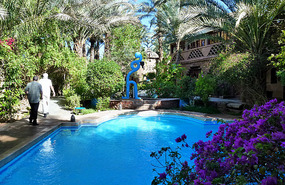
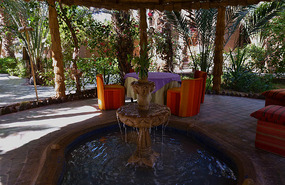
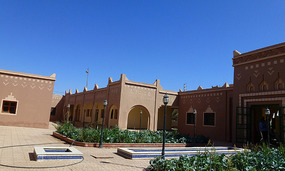
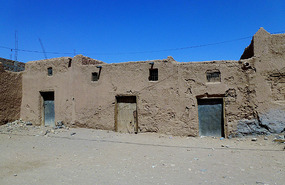
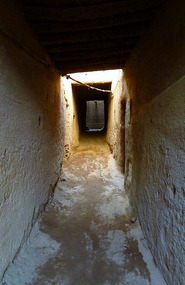
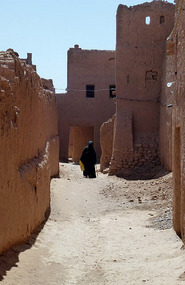
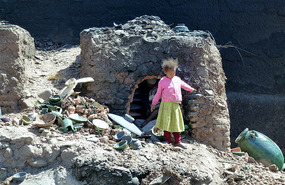
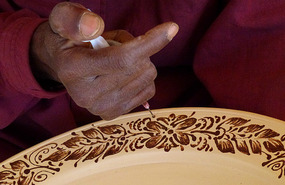
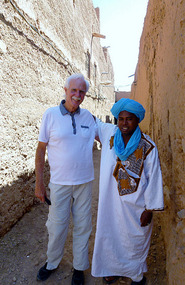
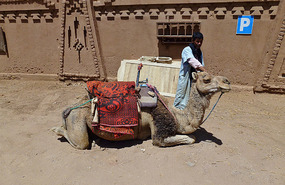

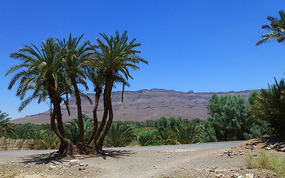
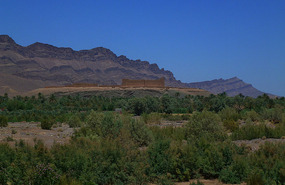

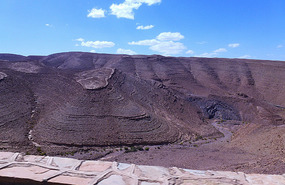
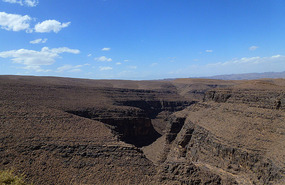
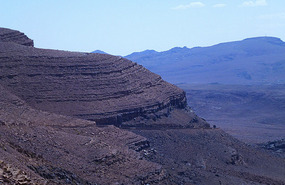

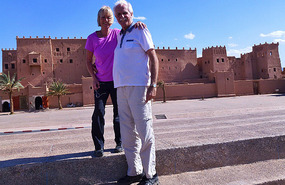





2025-05-23